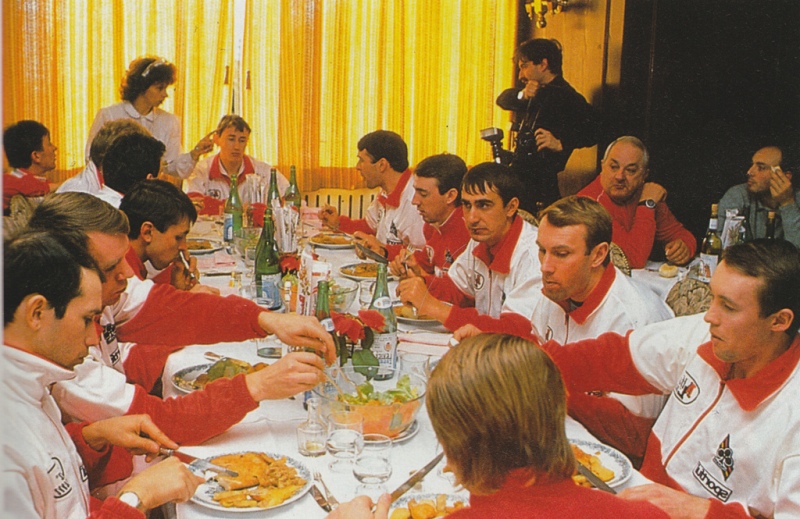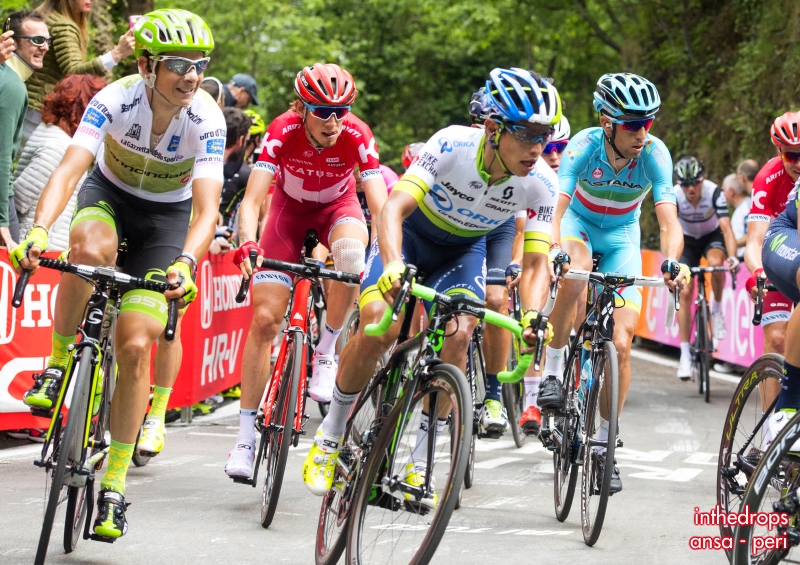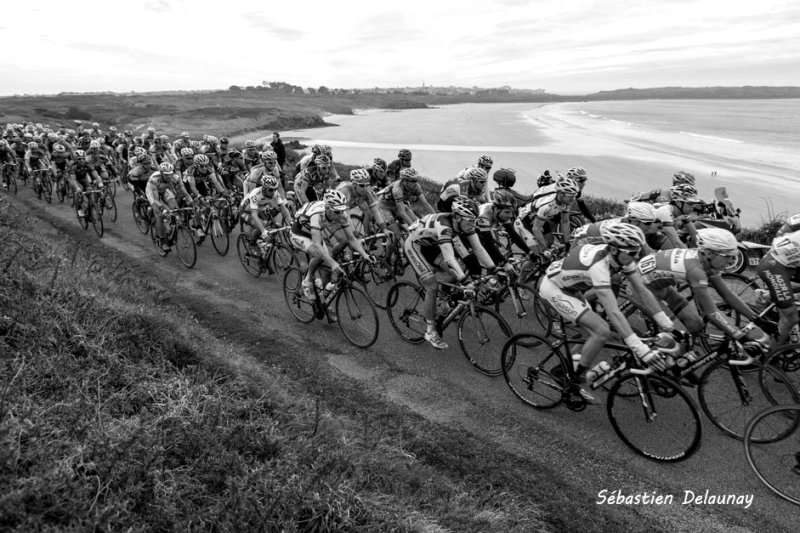
Taylor Eisenhart and Adrien Costa, two of America’s brightest young talents, made the trip across the Atlantic last week for the Tour of Britain. The week-long race marked the latest stage in their apprenticeships at two of the biggest teams in pro cycling – BMC for Eisenhart and Etixx-QuickStep for Costa.
22-year-old Eisenhart, who has raced for BMC’s Development squad for the past four seasons, was in high spirits as he prepared to start the race in Glasgow.
“It’s a dream come true for sure,” Eisenhart said of racing for BMC. “This is for sure the biggest race I’ve ever done – it’s like a show here – the crowds, everything. I’m more than excited to get this race going.”
The Utah native started his apprenticeship at his home race, August’s Tour of Utah, where he finished a strong seventh overall and supported team leader Darwin Atapuma as the Colombian finished fourth.
“I definitely wasn’t expecting that result. When we hit the first climbing day I looked back and there was nobody else on my wheel and just five guys up the road,” he said. “I was like ‘ok, we’ll see where this momentum is going’ and I was like ‘woah I can hang with the best at this race.’”
It’s a run of form he kept going at the Tour du Limousin, helping teammate Joey Rosskopf to the overall victory, and something he hopes to keep up this week. “By the time we hit the summit finish on stage six hopefully I’m the last guy for Rohan [Dennis] or I’m also up there in the mix,” he said. “Especially considering how I was climbing at Utah – I’m more than capable of being up there on those stages.”
Costa was also going well at Utah, ending up in second on GC – ahead of seasoned pros such as Andrew Talansky and Darwin Atapuma. Then he was off to France for the famous U23 proving ground, the Tour de l’Avenir – he took third overall to cap a great August.
Britain was Costa’s first race with Etixx-QuickStep, though he was already familiar with the team having taken part in a training camp with them back in December 2015. Racing with the team was a different experience though.
“I don’t really have any personal ambitions – I’m just trying to help the guys and see what I can learn,” he said at the start of the week. “I want to have some fun and I’m excited to discover this whole new level of racing.”
In the end Costa’s experience was a short-lived one, crashing hard on day two after his wheel slid on a reflector in the road as he ate a gel. He struggled on to the finish, rolling across the line in his blood-stained and ripped kit, over 23 minutes behind the winner – teammate Julien Vermote.
Suffering deep wounds to his elbow and side, he was off to hospital for surgery to close them – but not before a 24-hour wait. His race was over, but he remained with the team for the rest of the week.
“The cuts were right down to the bone on my elbows and on my abdomen, so it would’ve been too painful to clean and stitch while I was conscious,” Costa said outside the team bus before stage four. “Unfortunately I think if it had been on a normal road it would’ve been just a normal road rash sort of a deal but it was a really gritty, heavy road so obviously it cut me a lot deeper than normal.”
Costa, heavily bandaged, was smiling but clearly devastated to be out of his first race with the Belgian squad.
“It really sucks because you don’t get this opportunity every day, so for me that was the biggest bummer,” he said. “The wounds should be pretty much healed in three, four, five days so I just have to be careful with the bandaging. Hopefully I have a couple of races next week, so that should be nice.”
Meanwhile Eisenhart soldiered on, and looked to be improving as the week went on, taking sixteenth place in the Bristol time trial. After the summit finish of Haytor on stage six – where Eisenhart worked hard to help teammate Rohan Dennis take third – the Utahan reflected on his week.
“The whole race has been really hard – a lot harder than I honestly expected,” he said. “I think these power climbs are really just nutting me up. It’s different to getting on a 20km climb and setting a tempo.”
“The climbs – this whole race, just the style of it – it’s a lot more punchy, aggressive. It’s always very nervous in the bunch – honestly it’s been a fun race but it’s been tough.”
While Costa was forced out of the race early, Eisenhart left it much later – abandoning on the penultimate lap of the London criterium. The tough week eventually proved a bit too much for him, according to BMC DS Jackson Stewart, who said that he and teammate Loïc Vliegen had been suffering from stomach cramps.
He goes home having helped deliver team leader Dennis to a second overall and a stage win in Bristol, while Costa’s team went away with two stages and a spell in the yellow jersey.
But the calendar rolls on, and so will the American duo. Both headed to Belgium for the next stage of their apprenticeships. On September 17th they race the GP Van Petegem, while Costa’s first race back was the GP de Wallonie.
Looking further ahead, the duo’s futures are set, at least in the short term. Eisenhart was coy about exactly what he’d be doing in 2017 though.
“I’m still keeping that under wraps,” said Eisenhart. “I can say that I’m extremely excited with the team that I signed with for next year, and they’ve had a lot of belief in me for a while now. As each days goes by I think more and more about it and I know it’s the right place to be.”
Meanwhile Costa will return to Continental team Axeon Hagens Berman for 2017, though it wouldn’t be a surprise to see the teenager move on to the WorldTour after that. “It’ll be good to stay one more year at U23 level – at least one more year,” he said. “It was super fun this year, and it was only my first year as an U23, so there’s still time.”
So the Tour of Britain may not have been as positive an experience as the two young Americans might have hoped for, but it’s just the start of a new experience, a new chapter in their careers – and there’s a long way to go yet.































 Yates was World Champion in the points race at the 2013 Track Worlds
Yates was World Champion in the points race at the 2013 Track Worlds












